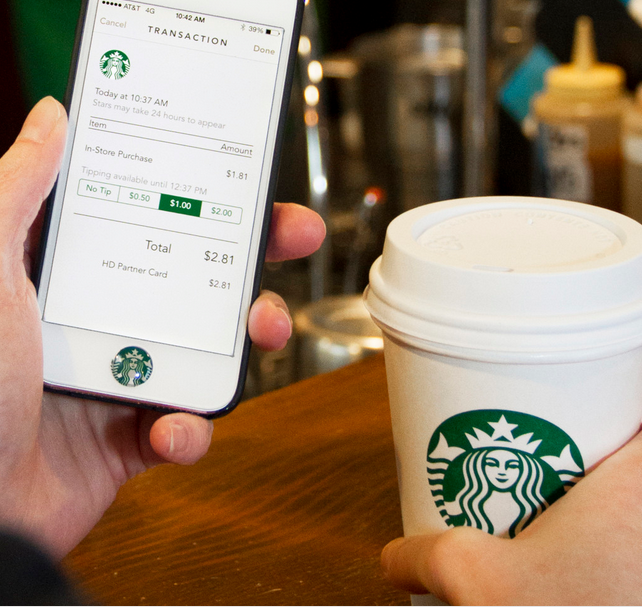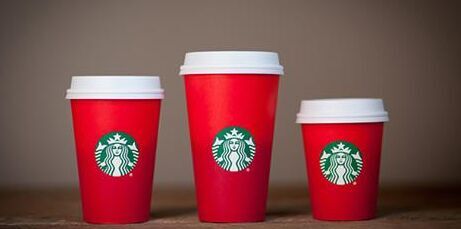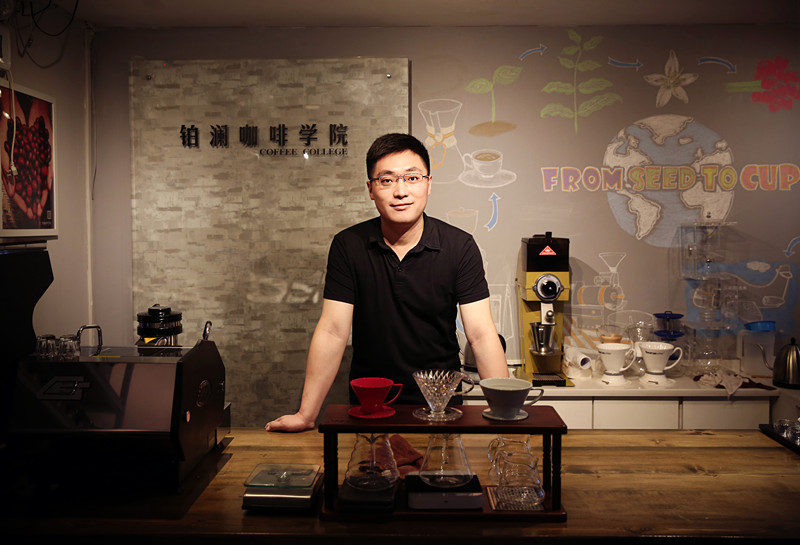Starbucks 3 poison moves to become the most successful and largest O2O organization

When it comes to "technology companies", the first brand that comes to mind is definitely not Starbucks, because Starbucks is not the first retailer to sell products through the Internet and use mobile phone app, let alone stop Starbucks from using technology to make consumers addicted.
In the past, coffee was sold by caffeine, but now it is necessary to seize consumers'"technology addiction" if they want to sell coffee well. In fact, Starbucks has become the most successful and largest O2O case, with about 45 million consumers spending at Starbucks every week, of which about 9 million use mobile phones to place orders to pay. What "drug tricks" does it have to make users addicted?
Poison trick 1: do mobile phone app crazily
When it comes to "technology companies," the first brand that comes to mind is definitely not Starbucks, because Starbucks is not the first retailer to sell products on mobile phones, and Starbucks doesn't sell the best coffee, but that doesn't prevent Starbucks from having the best mobile retail app.
"We believe we will be invincible, and with the development of the mobile consumer economy, our position will only be consolidated and become clearer," said HowardSchultz, part-time CEO of Starbucks chairman. This year, Starbucks is in good shape. The newly released financial report shows that Starbucks is doing well and has achieved steady growth again. Starbucks shares are up more than 50% so far this year.
Schultz said that through Starbucks' mobile order and payment function, consumers (in the US) can place an order and pay for coffee through app before arriving at any Starbucks store, and then pick it up at the store without having to wait in line. According to Schultz, Starbucks handles more than 5 million mobile orders a month, and that number is growing rapidly every hour. Starbucks' loyalty program now has 30 million members.
Poison trick 2: go crazy with mobile payments, with 9 million people a week
Recently, Starbucks has signed coffee distribution cooperation agreements with the New York Times, Spotify and Lyft. He described Starbucks' latest on-demand initiative: two weeks ago, Starbucks began delivering coffee to the Empire State Building. As long as consumers log on to Starbucks's delivery site through their app account, and then choose goods to place an order and pay for it, the distributor will deliver the coffee to consumers within half an hour. Later this quarter, Starbucks will also start distribution services in Seattle in partnership with Postmates.
Starbucks has shown in a variety of ways that it has found a way to combine its business model with the way consumers use personal technology products. According to the data, the number of mobile users at Starbucks has increased by 32% year on year. Every week, about 45 million consumers spend at Starbucks, of which about 9 million use mobile phones to place orders to pay. In October, Starbucks' mobile payments in the United States reached a higher level, accounting for 21% of all Starbucks transactions in the United States. I'm afraid even Apple will be jealous of this rapid momentum.
Poison trick 3: work with Apple to build brand stickiness
Starbucks is not the first company to apply digital technology to marketing, but it is definitely one of the best. As early as 2002, Starbucks stores have already achieved Wi-Fi coverage. In 2007, Starbucks partnered with Apple to provide customers with free access to iTunes Music. In 2008, Starbucks launched the Weekly recommendation program, which allows customers to use the cards they get at Starbucks stores in exchange for free downloads of iTunes songs.
As the most profitable company in the world, when Apple is willing to develop a smart design and sticky retail app, it is willing to join forces with the company.
Apple Pay is seen as a sign of Apple's ambitions to dominate digital payments. Cook said that 72 hours after the launch of ApplePay, more than 1 million credit cards were tied to ApplePay, and by the end of September, 14% of households with credit cards had signed up for the service. Although Apple Pay growth is slowing, Cook says transactions on Apple Pay are still growing at double-digit rates. And Apple plans to extend the Apple Pay to all Starbucks stores in the United States in 2016.
Mobile app is the next step in Starbucks' digital strategy chain. Physical store app is not uncommon, but for many retail app, consumer awareness is very low. Even if consumers know about the existence of these app, they may not realize the added value of using these app. And this is the best part of Starbucks' loyalty program.
Starbucks' focus and application of technology spans a number of different areas, including mobile payments, user loyalty and incentives, which are covered to boost sales.
Fundamentally, Starbucks' idea is to combine consumer loyalty programs with other businesses, such as allowing consumers to save stars in a variety of ways and places in exchange for free Starbucks coffee, and not limited to using Starbucks app.
This is how Starbucks attracts more coffee lovers to shop. In addition to the role played by people's desire for caffeine, mobile phone addiction is now another socially accepted addiction, and Starbucks has found a way to combine the two addictions and promote each other.
Important Notice :
前街咖啡 FrontStreet Coffee has moved to new addredd:
FrontStreet Coffee Address: 315,Donghua East Road,GuangZhou
Tel:020 38364473
- Prev

Starbucks red Christmas cup design causes controversy to remove iconic patterns such as reindeer
According to CNN on November 9, Starbucks' red cups this Christmas season have sparked controversy, with critics claiming that Starbucks is at war with Christmas. Starbucks said it deleted the reindeer and decorations used in the past as a Christmas symbol and replaced them with a simple, two-tone red cup. In late October, when these cups were launched,
- Next

How to price Chinese coffee and boutique coffee
The Pulan Coffee Institute has been in no mood to write anything since the deadline for "falling in love with the cafe" in July, and I feel like my brain has been hollowed out. Recently, there has been a heated discussion about the pricing strategy of coffee in the industry, which has given me some ideas. I am a person who doesn't like clouds and cocoons very much, so it's in my nature to come straight to the point. First of all, satisfy people's basic physiology and convenience.
Related
- Being chased out of the rain in front of Starbucks?! Store: Sheltering from rain under umbrellas poses a safety hazard
- The white moonlight has changed?! Lucky launches "Big Winter Pear American"
- Hand-brewed coffee three-stage method, high-sweet and universal brewing method to share! What does the high sweet water level of hand-brewed coffee mean?
- What is the difference between raw, refined and full espresso coffee? How to extract espresso and taste good?
- A complete list of coffee bean names and their meanings! What is Yejia Shefi coffee? Where is Mantelin coffee?
- What grade does Arida Manor Kaduai coffee beans belong to? What treatment is Arida ASD slow anaerobic sun exposure?
- The milk tea cup becomes smaller?! Overlord Tea Girl launches a new "Return to Yunnan" series
- Accused of selling counterfeit and high-priced coffee beans! Well-known boutique coffee brand "Oukelao" bowed and apologized!
- How to make espresso dumplings? Can I eat coffee and glutinous rice balls together?
- Save the unformed and stagnant powder cakes in one second! What is the problem with stagnant water in the powder bowl of the espresso machine?

